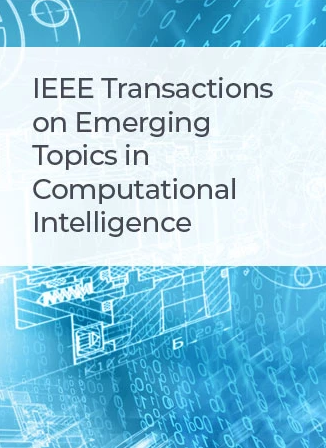三维左心房分段中的分层关系推理(Hierarchical Relational Inference for Few-Shot Learning in 3D Left Atrial Segmentation
IF 5.3
3区 计算机科学
Q1 COMPUTER SCIENCE, ARTIFICIAL INTELLIGENCE
IEEE Transactions on Emerging Topics in Computational Intelligence
Pub Date : 2024-04-02
DOI:10.1109/TETCI.2024.3377267
引用次数: 0
摘要
从晚期钆增强心脏磁共振(LGE CMR)图像中进行三维左心房(LA)分割对预防和治疗心房颤动具有重要意义。尽管基于深度学习的方法在三维 LA 分割方面取得了重大进展,但它们通常需要大量标记图像进行训练。少量学习只需少量数据样本就能快速适应新任务。然而,LGE CMR 图像的分辨率差异给三维 LA 分割中的少量学习带来了挑战。为解决这一问题,我们提出了层次关系推理网络(HRIN),通过双向层次关系学习模块提取支持量和查询量的交互特征。HRIN 通过对高阶关系建模来学习支持量和查询量之间的共性和差异。值得注意的是,我们将支持量和查询量之间的双向交互信息嵌入到原型中,以便自适应地预测查询。此外,我们还利用支持卷中的前景和背景信息的先验知识对查询进行建模。我们在两个中心的总共 369 次扫描中验证了我们方法的性能。与其他最先进的分割方法相比,我们提出的 HRIN 实现了更高的分割性能。在只有 5%数据样本的情况下,两个中心的平均骰子相似系数分别达到了 0.8454 和 0.8110。与相同条件下的其他方法相比,最高值仅为 0.7012 和 0.6898。我们的方法提高了从 LGE CMR 图像中进行少次分割的适应性和通用性,从而能够精确评估 LA 重塑情况。本文章由计算机程序翻译,如有差异,请以英文原文为准。
Hierarchical Relational Inference for Few-Shot Learning in 3D Left Atrial Segmentation
Three-dimensional left atrial (LA) segmentation from late gadolinium-enhanced cardiac magnetic resonance (LGE CMR) images is of great significance in the prevention and treatment of atrial fibrillation. Despite deep learning-based approaches have made significant progress in 3D LA segmentation, they usually require a large number of labeled images for training. Few-shot learning can quickly adapt to novel tasks with only a few data samples. However, the resolution discrepancy of LGE CMR images presents challenges for few-shot learning in 3D LA segmentation. To address this issue, we propose the Hierarchical Relational Inference Network (HRIN), which extracts the interactive features of support and query volumes through a bidirectional hierarchical relationship learning module. HRIN learns the commonality and discrepancy between support and query volumes by modeling the higher-order relations. Notably, we embed the bidirectional interaction information between support and query volumes into the prototypes to adaptively predict the query. Additionally, we leverage prior knowledge of foreground and background information in the support volume to model queries. We validated the performance of our method on a total of 369 scans from two centers. Our proposed HRIN achieves higher segmentation performance compared to other state-of-the-art segmentation methods. With only 5% data samples, the average Dice Similarity Coefficient of the two centers respectively reaches 0.8454 and 0.8110. Compared with other methods under the same conditions, the highest values only reach 0.7012 and 0.6898. Our approach improves the adaptability and generalization of few-shot segmentation from LGE CMR images, enabling precise evaluation of LA remodeling.
求助全文
通过发布文献求助,成功后即可免费获取论文全文。
去求助
来源期刊

IEEE Transactions on Emerging Topics in Computational Intelligence
Mathematics-Control and Optimization
CiteScore
10.30
自引率
7.50%
发文量
147
期刊介绍:
The IEEE Transactions on Emerging Topics in Computational Intelligence (TETCI) publishes original articles on emerging aspects of computational intelligence, including theory, applications, and surveys.
TETCI is an electronics only publication. TETCI publishes six issues per year.
Authors are encouraged to submit manuscripts in any emerging topic in computational intelligence, especially nature-inspired computing topics not covered by other IEEE Computational Intelligence Society journals. A few such illustrative examples are glial cell networks, computational neuroscience, Brain Computer Interface, ambient intelligence, non-fuzzy computing with words, artificial life, cultural learning, artificial endocrine networks, social reasoning, artificial hormone networks, computational intelligence for the IoT and Smart-X technologies.
 求助内容:
求助内容: 应助结果提醒方式:
应助结果提醒方式:


